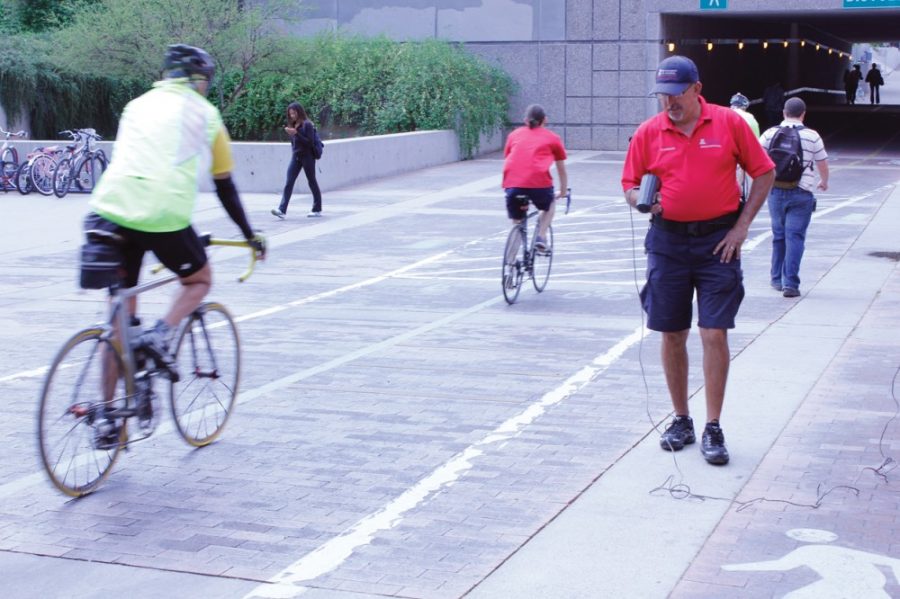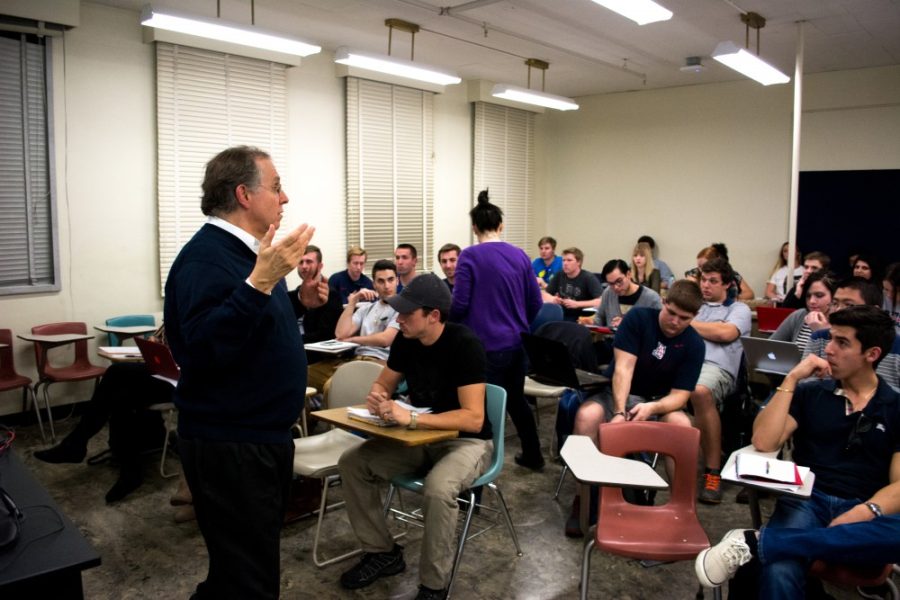Although the UA spent $1,200 on radar equipment being used to measure bicycle speeds on campus, no tickets have been issued to speeding cyclists.
The UA’s Parking and Transportation Services purchased the mobile radar equipment about a year ago to measure car speeds in the garage and bicycle speeds at random. No tickets have been issued — only verbal warnings for those going too fast, said Mark Napier, associate director of operations for PTS. The purpose of measuring bike speeds is to increase awareness, Napier added.
“I wouldn’t say we have noticed a difference, but we do know it increases awareness,” Napier said. “Our main purpose, with respect to bicycles, is to increase awareness. We may see it [a fast speed] and give a verbal warning — yell out, ‘Hey, you’re going too fast.’ It’s a little hard to issue a ticket, though.”
Some students said they thought the purpose for the radar guns was a good idea, even if they hadn’t seen them.
“I ride my bike, so that’s kind of interesting. I mean, I don’t think I’m going that fast,” said Alexis Kyroudis, a retail and consumer sciences sophomore. “It’s kind of useful to be observant. I feel like some people don’t know how to deal with bikes around them, so I think that might be beneficial.”
However, other students said they were confused about the use of radar guns to raise awareness about speeding.
“I don’t think it’s a huge issue, but there have definitely been times I’ve seen people going fast and they almost hit someone,” said Peter Hanson, a neuroscience freshman. “I don’t think a radar gun is necessary. They should just tell people, ‘Hey, be careful.’”
Bicycle speeds are measured at the Olive Road and Highland Avenue tunnels under Speedway Boulevard and on University Boulevard about two times a week. PTS staff said they noticed that the bike paths are sloped down into the Olive Road tunnel, creating a speeding problem.
“Pedestrians come down from the Park [Avenue Parking] Garage and sometimes people [are texting], and we wanted to reduce the possibility of collisions,” Napier said. “Some people … don’t realize, ‘I’m going 27 miles per hour on my bike.’ And when they see that, they think, ‘Oh, what if I hit somebody?’ It’s a very serious collision.”
Megan Hickman, a pre-veterinary science freshman, said she disagreed with the thought that bicyclists would think about their speed and connect it with a collision.
“I don’t think people who ride bikes think about it like that; [they think about] just how fast they are going,” Hickman said. “I don’t think it’s speeding [that is the issue]. I think it’s the traffic.”
Regardless of whether or not students understand the purpose of the radar gun, Napier said that as long as he is at the UA he will continue its use to increase awareness about bike speeds and reduce collisions.









